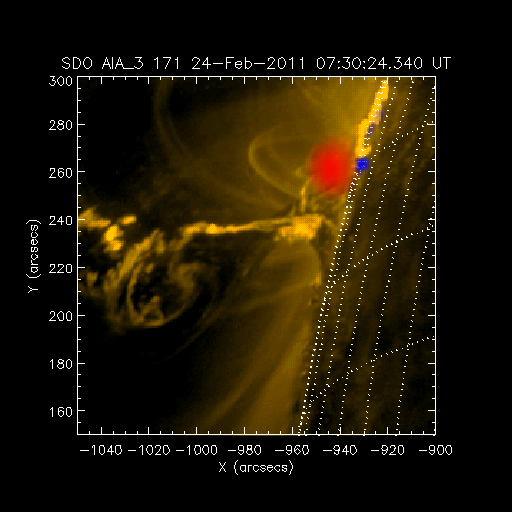X-ray, EUV & WL emission heights observed by RHESSI & SDO
From RHESSI Wiki
Introduction
To get a complete picture of what is going on in a solar flare one has to look at different wavelengths of the electromagnetic spectrum. Hard X-rays tell us something about the flare accelerated electrons, their number and where they are stopped in the chromosphere while soft X-rays reveal information about hot component of the flare heated plasma. In addition, observations in extreme ultraviolet give more detailed information about the temperature structure where different wave-lengths give information about different temperatures. Finally, there is white light emission. First seen in the very first every observed flare, the famous Carrington event, it proves to be rather elusive and was long believed to only be present in very large flares. Although more recent observations suggest its presence also in smaller flares, the origin of the emission (in terms of height in the solar atmosphere) and the emission mechanism itself is still subject of debate. Combining RHESSI observations with SDO/AIA and SDO/HMI of source positions and applying a neat trick to find the chromospheric density and, most importantly, a reference position for the photosphere, we can now find not only the relative positions, but the relative heights of footpoint sources at different energies/wavelengths. The Sun collaborated nicely by providing a medium sized flare near the limb on February 24th 2011 ~ 07:31 UT, that allowed us to do this. Figure 1 shows an overview of the flare.
 AIA 171 A image overlaid with RHESSI 6-12 (red) and 25-50 keV (blue) emission.
AIA 171 A image overlaid with RHESSI 6-12 (red) and 25-50 keV (blue) emission.
Finding the relative height of X-ray, EUV and WL sources
For this, we used the same trick that was used by Kontar et al. 2008. In a classical thick target case, electrons with higher energies will penetrate deeper into the chromosphere. Therefore, the radial position of the observed X-ray footpoint is energy dependent, where the chromospheric density determines the position vs energy relation. So, by assuming a function for the density, we can fit the observed position vs energy relation. This also gives us a value for the radial position that corresponds to the photospheric height.